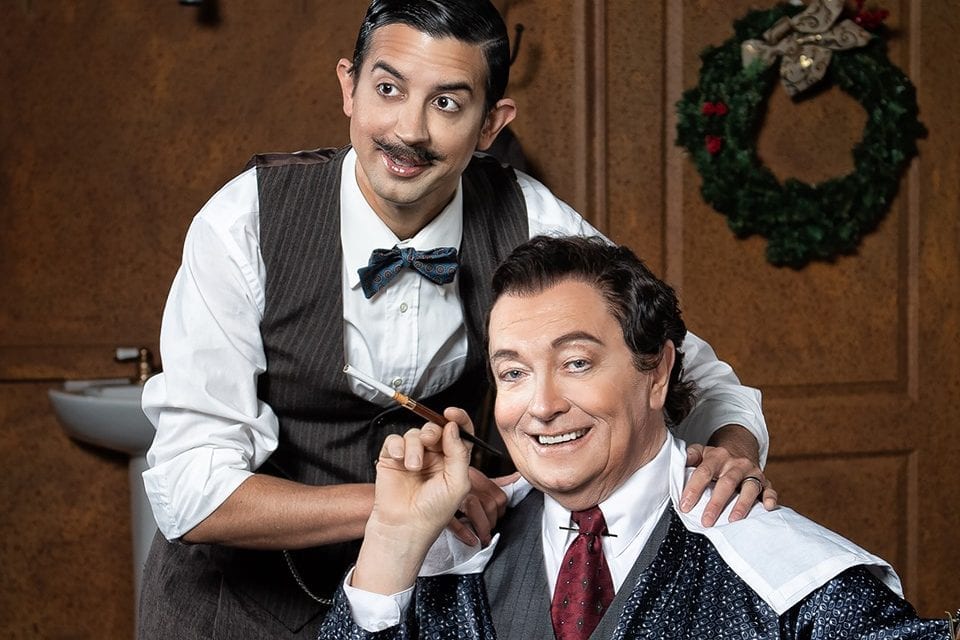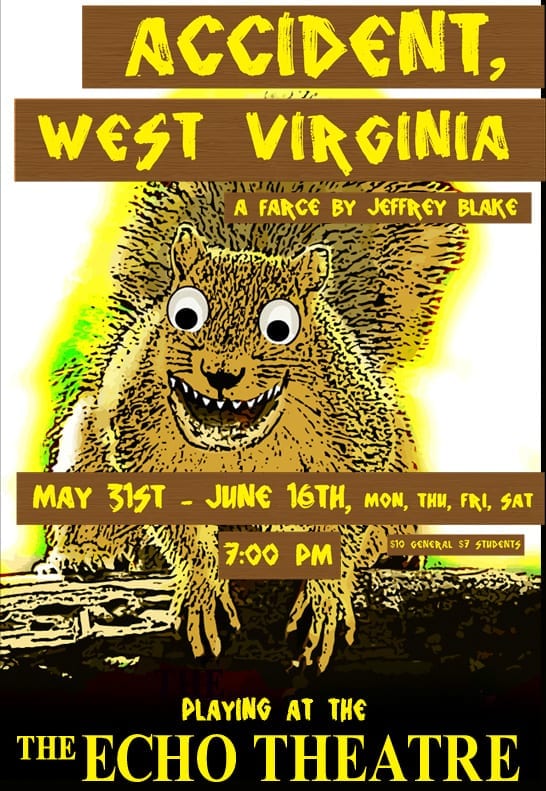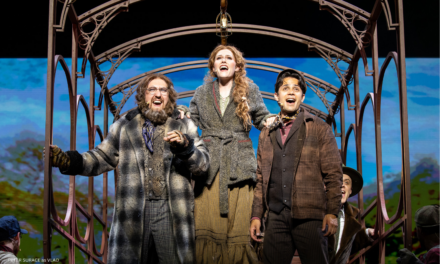LOGAN — Bravo, Caruso! is the beginning of the summer Utah Festival Opera and Musical Theatre experience happening in northern Utah. This two-man opera directed by Vanessa Ballam has much less singing than storytelling as it takes place in the famous Caruso’s dressing room.

Show closes July 30, 2019.
Mario Fantini, played by Stefan Espinosa, begins the scene as he silently sets up the room for Caruso’s arrival. Played by Michael Ballam, Caruso enters right as the record player blasts his highest, loudest note, and he mimes along with the big finish. As the two get ready for the big night, they tell their company (two silent reporters sitting among audience members) stories from past performances and experiences. Throughout the play, Caruso coughs more frequently, hinting that this night may be his last hurrah.
I am impressed with the performers, because this show has less going on than I anticipated, and that night I was worried it wouldn’t keep my attention. Between Espinosa’s hilarious facial expressions and Michael Ballam’s amazing, booming voice, I was more than happily entertained. The writing is also fantastic by William Luce, who is also the author of Lucifer’s Child and The Belle of Amherst. I love how the performers would reminisce into a story and bring the scene back to that moment. The performers use many of the props in the room, including the ironing board for a car and the Christmas wreath as a hair decoration for a woman they are referring to and who Espinosa as Mario plays brilliantly in a high squeaky voice. Director Vanessa Ballam makes some amazing choices when it comes to blocking. During one scene, I actually wanted to see Caruso enjoy his meal without having to talk so much during it, because I was so invested in him getting what he wanted before the show. I also greatly enjoy watching him put on his makeup and wig so meticulously. When Caruso finally turns so the transformation can be seen, the timing is breath-taking. Vanessa Ballam also chose to have increasing amounts of blood used during Caruso’s coughing episodes so that I felt increasingly worried for him, especially at the end. I nervously hoped he would live to make it through the performance.
Michael Ballam has such great presence onstage that it is easy to see him as the famous Caruso. I love so many of Caruso’s lines, especially his jokes during storytelling, like when talking about a soprano he knows: “How does such a little aria come from such a big area?” He also plays the moment in each story he tells as if some of them are happening presently. When he talks about the earthquake in San Francisco, the lights onstage start swinging, and he and Espinosa move as if the whole stage is shaking. It is a great effect. The same effect happens with the volcanic explosion he imagines happening, and the lighting flashes red and glows darkly. I am highly impressed with the lighting designer, Joshua Wroblewski. The most tender moment is when Caruso tells the story of a little boy who is begging on the street. When asked what the boy will do if he doesn’t get a coin, the boy replies happily, “Well, I still have the sun!” Caruso then says, “That is the Italy I long for. If I can’t sing, will I still have the sun?” It’s a question worth asking every time tragedy hits. If I can’t have what I want, can I still feel joy because of what I do have? Michael Ballam as Caruso tells each story and performs each moment with a power and tenderness so believable it hits the heart and mind.
Espinosa as Mario is all over the stage constantly doing the work of a butler. His loveable, cheery attitude throughout makes it so that when he brakes down in sobs over Caruso’s sickness, the moment is heartbreaking. I wanted to go hug the poor butler. Mario’s over the top anger at Rossini for putting the opera in French instead of Italian is so funny, I still laugh at the thought of that scene. The reporters that Mario and Caruso talk to in the audience are fun, because Espinosa as Mario reacts toward the audience in perfect moments. When Caruso asks Mario to iron his shirt for the third time because he didn’t notice Mario iron it before, Espinosa as Mario looks out at the audience in exasperation with a “you see what I have to deal with?” look. Mario also has some great lines such as, “A stitch in time saves a hell of a lot of trouble.” Espinosa plays Mario with hilarious timing and attitude that compliments Michael Ballam’s performance and that brings Espinosa’s character alive.
The set design by Jack Shouse is beautiful. The piano, dressing table, and 1920’s curved back chaise lounge all fit the style of luxury reserved for one of the best performers. The room is almost a curved shape so that at the end when the audience is projected onto the dressing room, the projection is a good fit. I love the atmosphere the music produces at the beginning of the show by hearing Caruso sing Christmas songs on his record. It is nice to hear moments of him singing onstage while not having full opera songs to sit through. The variety is perfect.
For such a simple set and cast, this show amazes with the power of a much larger-sized production. I highly recommend this show, especially for those who love the nostalgia of memory. The stories are fantastic, and the performers share them so enjoyably. I hope to see this again in future.





